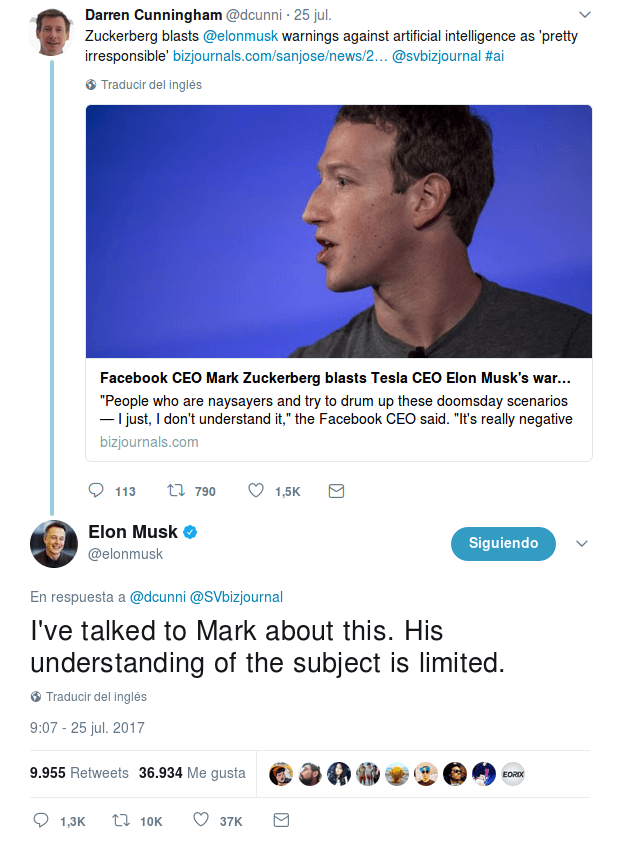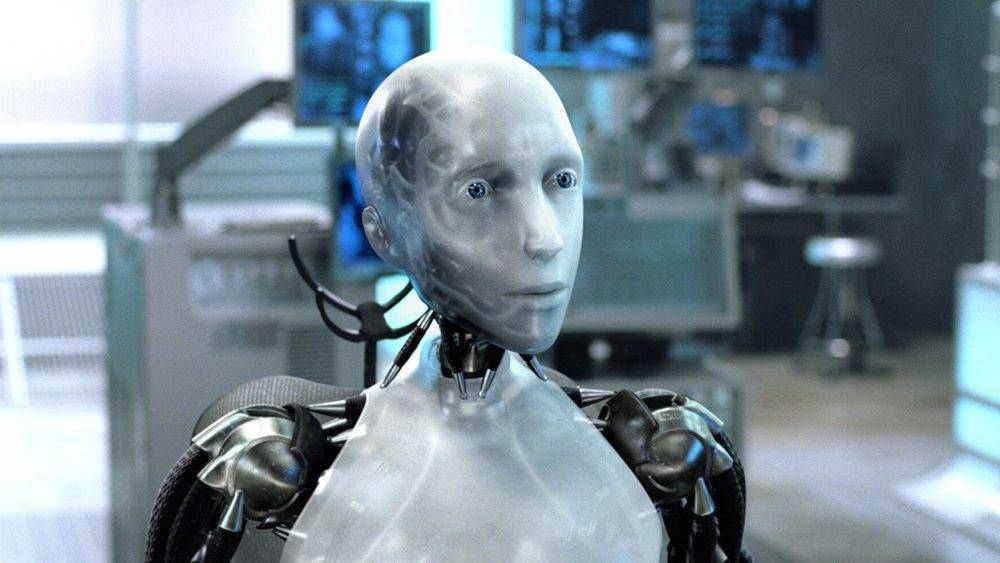The 10th February 1996 is an important date in chess history. It was the day when a computer called Deep Blue from IBM, won a chess match against Garry Kasparov, who held the chess world championship.
That was the first time that a computer defeated a human being in this field, although Kasparov won the rest of the matches played afterwards. A year later, an improved version of the IBM supercomputer, Deeper Blue, won six matches against Kasparov under tournament conditions.
It’s very common to hear about this story when it comes to explaining the relationships between machines and the human being. At that time, newspapers talked about this chess battle without using the term that we would use today: machine learning.
Machine learning, when robots start making decisions for you
There is a learning process when the human being gains knowledge or new skills. Today, we can say that computers have this learning process, too.
Machine learning is a part of the artificial intelligence field where computers and robots copy cognitive functions from humans. They change their behaviour according to the data they have, and so, they can perform tasks with more success.
Through this ability to learn without being explicitly programmed, robots make predictions and decisions, as they build patterns and accumulate data from various samples and background.
In relation to decision-making, machine learning is commonly classified by if it is supervised by humans or not.
- Supervised learning: this method is incorporated in most of the machine learning computers. You enter data into the computer (they are initial models) and an algorithm. The computer gathers this information and gives a response which is reviewed by humans.
- Unsupervised learning: in this case, the computer has a set of data which is clustered by similarity, which means that there are no correct or wrong decisions that need to be reviewed by humans.
There are more types of machine learning like semi-supervised learning or reinforcement learning, and common algorithms like the neural networks, the decision trees or the nearest neighbor.
Some people use concepts like machine learning and artificial intelligence like they mean the same thing, but that is wrong. While machine learning is related to the application of artificial intelligence to computers, artificial intelligence embraces all kinds of technologies where machines have to perform certain tasks.
However, this technology is not as new as people think. Artificial intelligence was born in the 50s as a challenge of simulating the human brain. One of the characteristics of this technology is that, after some time, something you may consider as artificial intelligence becomes common technology. That happens when everybody starts to use it.
You may be using machine learning and still don’t know it

Westworld is a series where humans go to a theme park to stay with robots that are programmed to respond positively to any human request.
When it comes to talking about topics like artificial intelligence and machine learning, it’s easy to imagine a future of autonomous cars and policemen investigating crimes that haven’t happened yet. However, as we saw some lines above, artificial intelligence is not new, and machine learning is not at the earliest stages.
You find examples of this technology in the latest generation of smartphones, which have virtual assistants like Siri (iOS). Recently, with the update of iOS 11, Siri has evolved to several levels of data processing (called neural networks). Now, Apple devices talk to you with a natural voice, and they understand human voices (better).
There is another stage which is interesting for those who are enthusiastic of this innovation: chatbots. You find this type of technology in message applications like Telegram or Kik, where humans interact with robots that give answers based on keywords.
There are lots of businesses that work with artificial intelligence to support their customer service or to offer their clients extra value. Victoria’s Secret has a chatbot in Kik. It helps clients to find the right size of bras. The Swedish firm, H&M, has a chatbot where you can choose an item of clothing, and it gives you ideas for outfits.
There are also applications like Your.MD which gives you an initial diagnosis from the symptoms you have. That technology is useful for those who can’t see a doctor right away.

What does the future hold for us with machine learning technology?
Theodore Twombly has a solitary life until the day he started to talk with Samantha. The relationship between them was special, and they got closer the longer they spoke to each other about their desires and needs.
We could say that Theodore and Samantha were two people who had the luck of finding romance, but this is the story of the movie called Her, which stars Joaquín Phoenix. In the movie, he fell in love with his system operator, Samantha, as it has artificial intelligence. Samantha has access to Theodore’s information (notes, e-mails, music and searches) through his smartphone, and she used that data to learn about him.
This movie presents a futuristic scenario, where computers with machine learning are an important part of our lives, and they can build relationships with humans.

According to some researchers, solitary life is considered one of the major epidemics in modern societies. Will artificial intelligence be prepared to save us from ourselves?
These dystopic scenarios are frequent on the big screen, where robots are designed to attend to our needs or to make us feel less alone, but that is real life for the scientific community. Some of these scientists create robots like Erica, the most beautiful and intelligence android according to her Japanese creator, Professor Hiroshi Ishiguro.
It is not surprising there is an ethical debate about machine learning and artificial intelligence. Some people (Elon Musk is among them) affirm that this technology will be one of the biggest threats that the human being will have to face. Some others, like Mark Zuckerberg, believe that we are not at risk.
Both visions became popular because of a tweet published by Musk affirming that the CEO of Facebook has a limited understanding of this subject.

Whatever the case, machine learning is now in our lives. Despite it being too soon to know its potential when it comes to making life easier and saving resources, it is time for organisations that need to invest in this technology to do so. Artificial intelligence and machine learning could change everything and make life like a futuristic movie.
- The keys to get the ISO 27001 certification - November 14, 2019
- Managed Security Service – MSSP - October 23, 2019
- DDoS Attacks – An In-Depth Guide - September 12, 2019







Comments are closed.